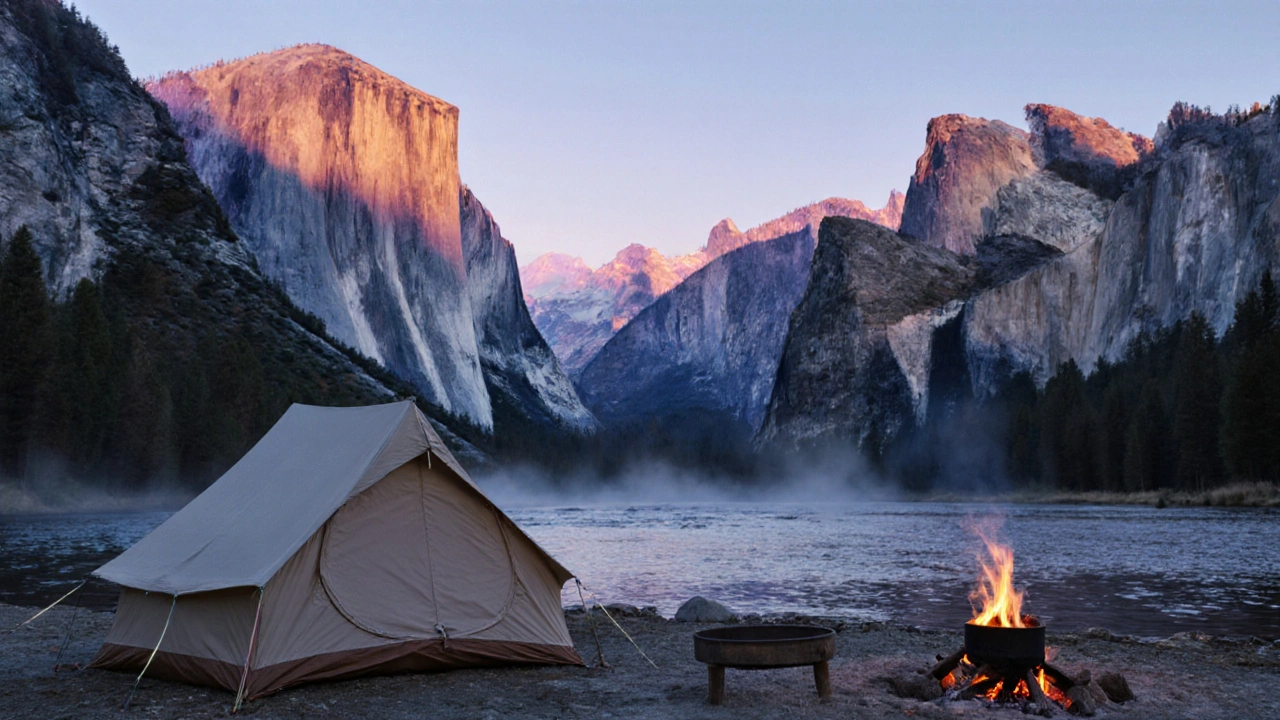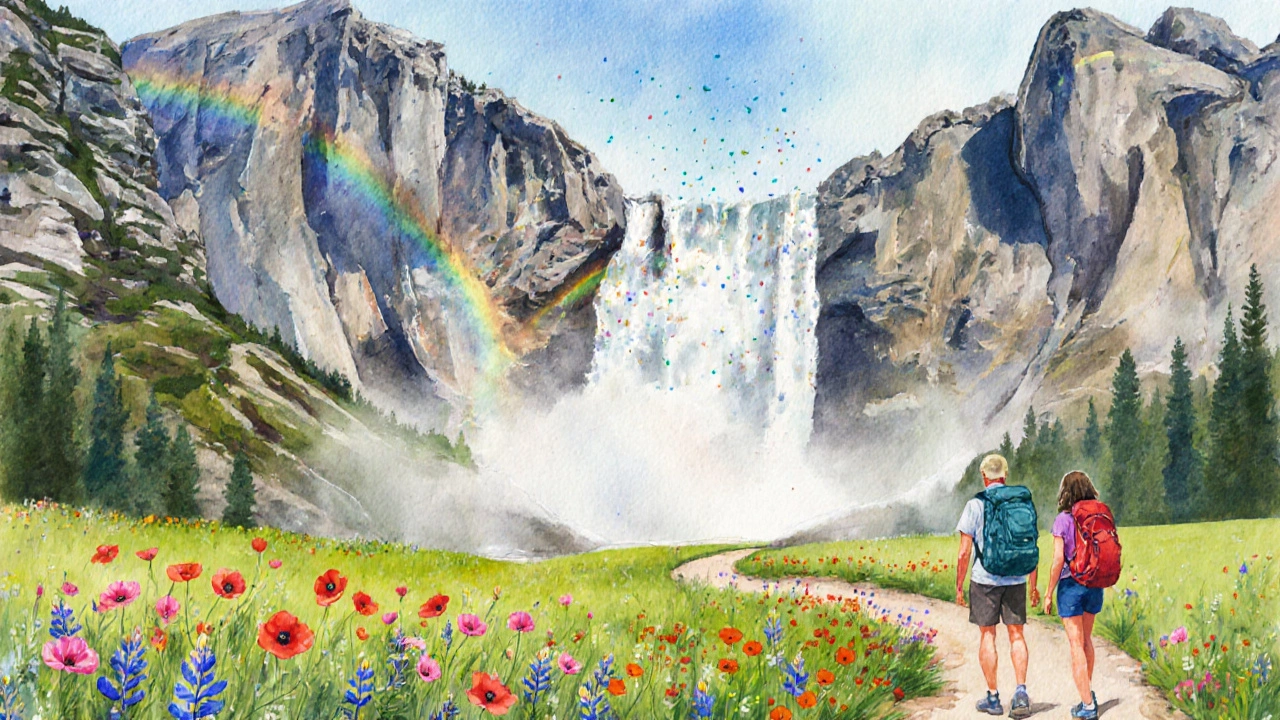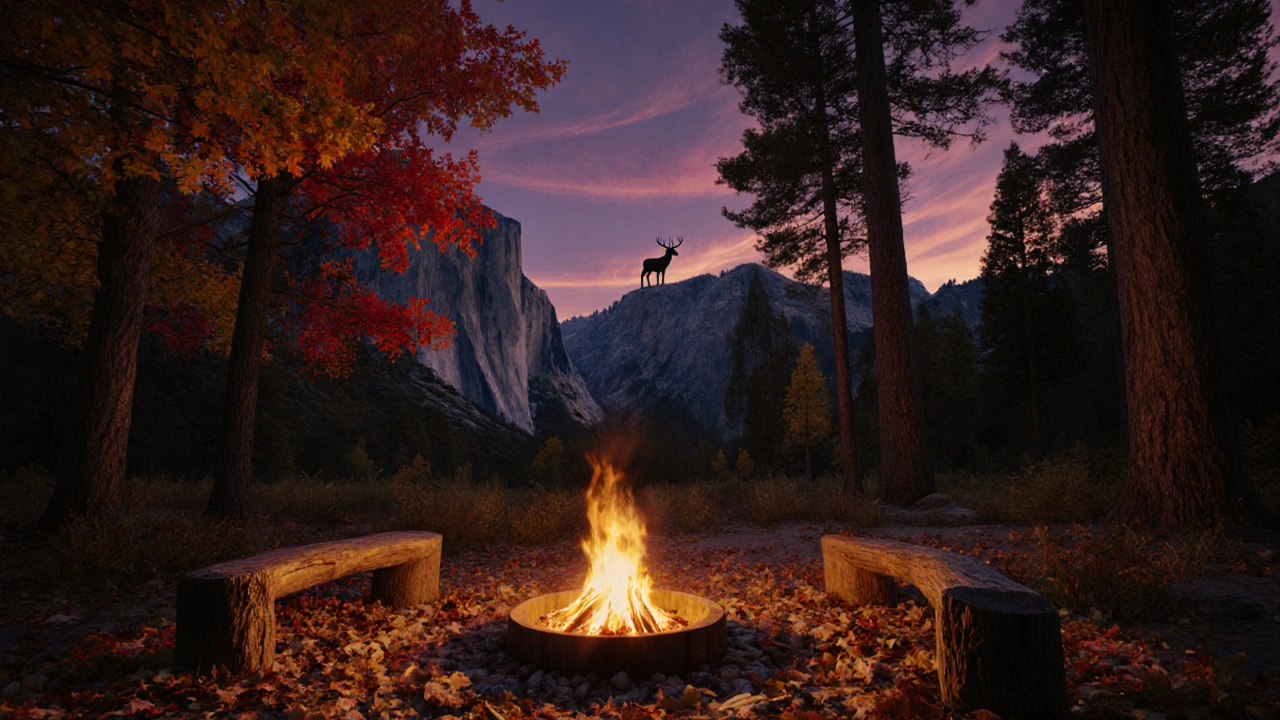Best Season for Camping in Yosemite National Park (2025 Guide)

Yosemite Season Finder
Select what matters most to you for your Yosemite camping trip to find your ideal season.
Your Ideal Season:
Did you know Yosemite National Park sees over 4million visitors each year, but only a fraction of its campsites are booked during the cooler months? Choosing the right time to pitch your tent can mean the difference between a crowded, noisy night and a peaceful sunrise over granite cliffs.
Yosemite National Park is a protected wilderness area in California’s Sierra Nevada, famous for its towering cliffs, waterfalls, and diverse ecosystems. Established in 1890, the park spans 1,200square miles and offers more than a dozen campgrounds ranging from river‑side sites to high‑altitude backcountry loops.
Understanding Yosemite’s Climate
Yosemite sits at elevations between 2,000ft (valley floor) and over 13,000ft (High Sierra). That vertical spread creates distinct weather patterns:
- Winter (Dec-Feb): Snow blankets the higher elevations, while the valley stays chilly (30-50°F). Snowfall can make some roads impassable, but the scenery is dramatic.
- Spring (Mar-May): Temperatures climb to 60°F, waterfalls hit peak flow, and wildflowers start popping up.
- Summer (Jun-Aug): Warm days (70-90°F) attract the biggest crowds. Afternoon thunderstorms are common, especially in July.
- Fall (Sep-Nov): Cooler evenings (40-70°F), fewer visitors, and brilliant foliage in October.
Because temperature and crowd size shift so dramatically, the “best” season depends on what you value most: solitude, scenery, wildlife, or ease of access.
Season‑by‑Season Breakdown
Below is a quick snapshot of each season’s pros and cons.
| Season | Typical Temp (°F) | Crowd Level | Wildlife Activity | Road/Trail Access |
|---|---|---|---|---|
| Winter | 30‑50 | Low | Hibernating mammals, occasional mule deer | Tioga Road closed; valley roads open |
| Spring | 45‑65 | Medium | Bear activity rises, bird migrations | All major roads open by late May |
| Summer | 70‑90 | High | Black bears active, abundant insects | All roads open; some fire restrictions |
| Fall | 40‑70 | Low‑Medium | Bear foraging, elk rut in October | Tioga Road reopens mid‑Oct, then closes Nov 1 |
Booking Tips and Reservation Timing
All Yosemite campgrounds, except a few first‑come‑first‑served sites, are booked through Recreation.gov. The system opens reservations 5 months in advance for most sites. Here’s how to improve your odds:
- Mark the exact release date on your calendar (e.g., March1 for summer sites).
- Create an account and save your payment details beforehand.
- Log in at least 10minutes early; the site experiences heavy traffic.
- If a site is sold out, check the “waitlist” option-cancellations happen frequently.
For winter trips, many campgrounds (like Upper Pines) accept walk‑ins, but you’ll still need a permit for fire rings in the valley.

Best Campgrounds for Each Season
Not all campgrounds are created equal. Pick the one that matches your season and activity preferences.
- Winter: North Pines and Upper Pines stay open year‑round. Snowshoe or cross‑country ski from these sites for a quiet, frost‑kissed experience.
- Spring: Lower Pines offers a short walk to the Merced River when the snow melt is high. The nearby Sunset Campground (near Glacier Point) is perfect for flower‑hunting.
- Summer: Upper Pines and North Pines are the most popular, but book early. For a less crowded vibe, try Camp 4 (first‑come‑first‑served) or Tuolumne Meadows (high‑altitude).
- Fall: Wawona near the historic hotel feels like a small town in autumn. Bear Valley offers cooler nights and brilliant foliage.
All of these sites have basic amenities: a fire ring, picnic table, and vault toilets. If you need showers, Upper Pines and Wawona have communal facilities.
What to Pack for Yosemite’s Varying Weather
Pack smart, not heavy. Here’s a quick packing list for each season:
- Winter: insulated sleeping pad, four‑season tent, thermals, crampons or microspikes for icy trails, and a portable snow shovel.
- Spring: waterproof jacket, gaiters (muddy trails), layered clothing for fluctuating temps, and a headlamp for early sunrise hikes.
- Summer: sun hat, sunscreen, lightweight breathable clothing, plenty of water (at least 3L per person), and a mosquito net for evening meals.
- Fall: warm hat, gloves for early mornings, sturdy boots for leaf‑covered paths, and a portable stove for hot meals.
Don’t forget a park map, a basic first‑aid kit, and a reusable water bottle-Yosemite’s refill stations are plentiful in the summer but can be seasonally closed.

Why Yosemite camping Is Worth the Planning
When you finally sit by the fire and hear the distant roar of waterfalls, the effort of booking a site feels worth it. Whether you chase the spring bloom, the fall colors, or the quiet of winter snow, Yosemite offers a unique experience each season.
Frequently Asked Questions
When do Yosemite campground reservations open for the summer season?
Reservations for most summer campgrounds open exactly five months before the start date. For example, a July1 reservation becomes available on February1.
Are any campgrounds open during winter?
Yes. North Pines, Upper Pines, and Lower Pines remain open year‑round. Some high‑altitude sites, like Tuolumne Meadows, close when snow accumulates.
Do I need a fire permit to camp in Yosemite?
Campfires are allowed in designated fire rings at most valley campgrounds. No separate permit is required, but be aware of seasonal fire bans during dry summer months.
What's the best way to get to Yosemite if I’m coming from San Francisco?
Driving is the most flexible option - take I‑580 east, then I‑205 and I‑5 north to CA‑120 east. The drive takes about 4‑5hours depending on traffic. During winter, check road closures for Tioga Pass.
Can I camp in Yosemite without a reservation?
A few first‑come‑first‑served sites, like Camp 4 and some backcountry loops, allow walk‑ins. Arrive early (before 10am) to increase your chances.
Yo fellow Americans, Yosemite is our backyard and we gotta claim those campsites come winter! The snow‑covered cliffs are a true test of true‑blue grit. If you’re scared of a little cold, pack a four‑season tent and show the park who’s boss. Don’t let those tourists steal the view, get there early and lock that spot. This is how real patriots enjoy the great outdoors!
Your bragging about “claiming” campsites sounds like entitlement, but the park isn’t a battlefield for ego. Respect the reservation system and the wildlife, or you’re just another careless tourist. It’s immoral to treat public land like private property. The right thing is to follow the guidelines and leave no trace.
Hey folks, great guide here. I’ve been to Yosemite many times and I’d say spring is the sweet spot if you want blooming wildflowers and fewer crowds. The rivers are full and you can still camp without dealing with snow gear. Just remember to book early on Recreation.gov, the slots disappear fast. Happy trails!
Listen the park’s reservation system is a front they use to control us. They hide real availability and push the crowds into the summer rush. Stay off the official site and use the phone line at 5 a.m. for a chance to snag a spot.
When I stand at the rim of Yosemite in the amber glow of sunrise, I feel the pulse of the earth echoing through my very soul. The seasons are not mere weather patterns; they are verses in a poem that the mountain has been reciting for millennia. Winter, with its silvery veil, whispers of introspection and the quiet courage required to brave frost‑kissed trails. Spring bursts forth like a revelation, each waterfall a trumpet announcing rebirth, inviting us to shed our heavy cloaks of doubt. Summer arrives in a blaze of glory, the sun a relentless overseer, testing our resolve against swarms of insects and the roar of distant thunderstorms. Autumn, however, is the philosopher’s dream, a canvas of amber and crimson where the scent of pine mingles with the faint sigh of elk in rut. To choose a season is to choose a mindset, a lens through which we interpret the wilderness. Yet the park does not care for our preferences; it merely offers its gifts to those who arrive with respect and humility. The reservation system, though tedious, is a pact between humanity and nature, a promise that we will tread lightly. When you book a site, you are not just securing a spot for a tent-you are securing a moment of communion with ancient stone and living water. Pack wisely: a four‑season tent for winter, layers for spring, sunscreen for summer, and a warm hat for the crisp evening of fall. And always, always leave no trace, for the mountains remember every footprint left behind. In the end, whether you camp beneath a blanket of snow or among golden leaves, the true reward is the silence that follows the last crackle of your campfire, a silence that tells you you are exactly where you are meant to be.
While I appreciate the poetic tone, let me correct a few grammatical errors: “the seasons are not mere weather patterns” should be “the seasons are not merely weather patterns,” and “the park does not care for our preferences” would be clearer as “the park does not care about our preferences.” Also, the claim that the reservation system is a “pact” feels conspiratorial-there is no hidden agenda, just a practical management tool.
I hear both the romanticism and the practical advice you’ve shared, and I think it’s vital we balance awe with responsibility. When we camp, we’re part of a larger dialogue with the environment, and asserting our presence with care shows respect for both the land and future visitors.
Winter camping in Yosemite is underrated and peaceful.
Oh dear, you’ve barely scratched the surface-those frost‑kissed mornings whisper ancient poetry that only the truly cultured can hear, darling.